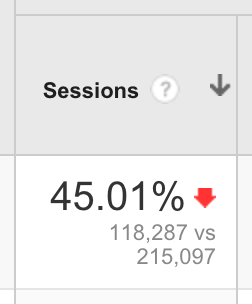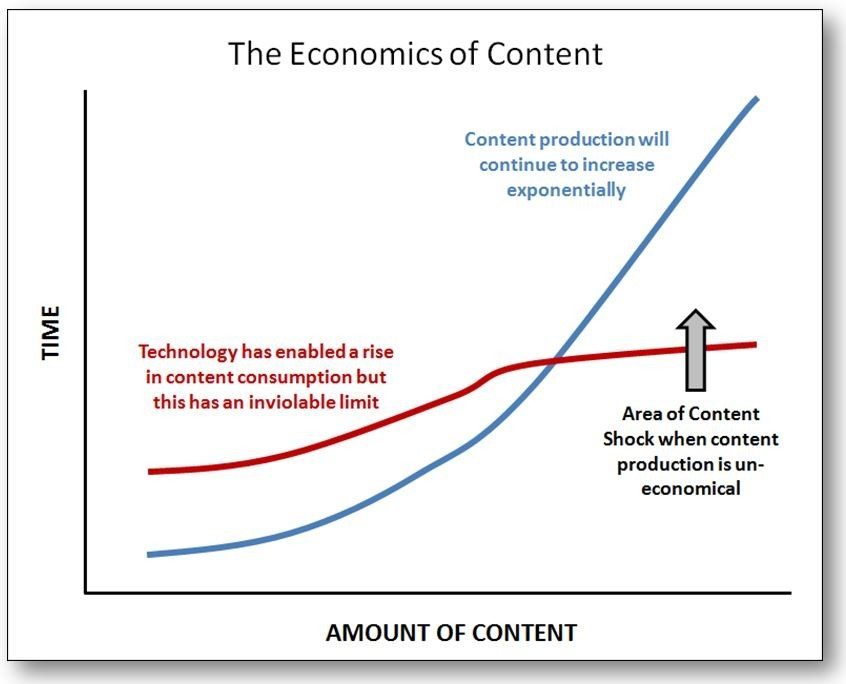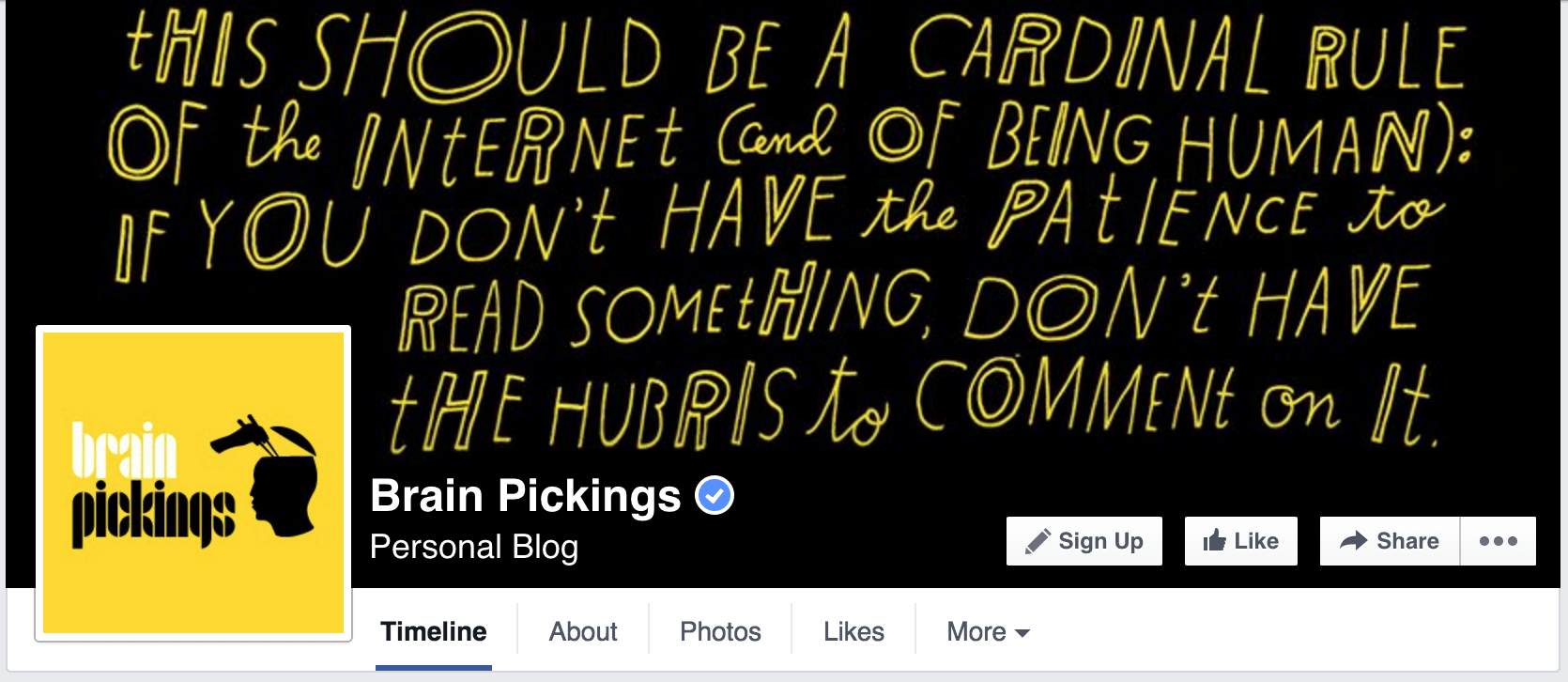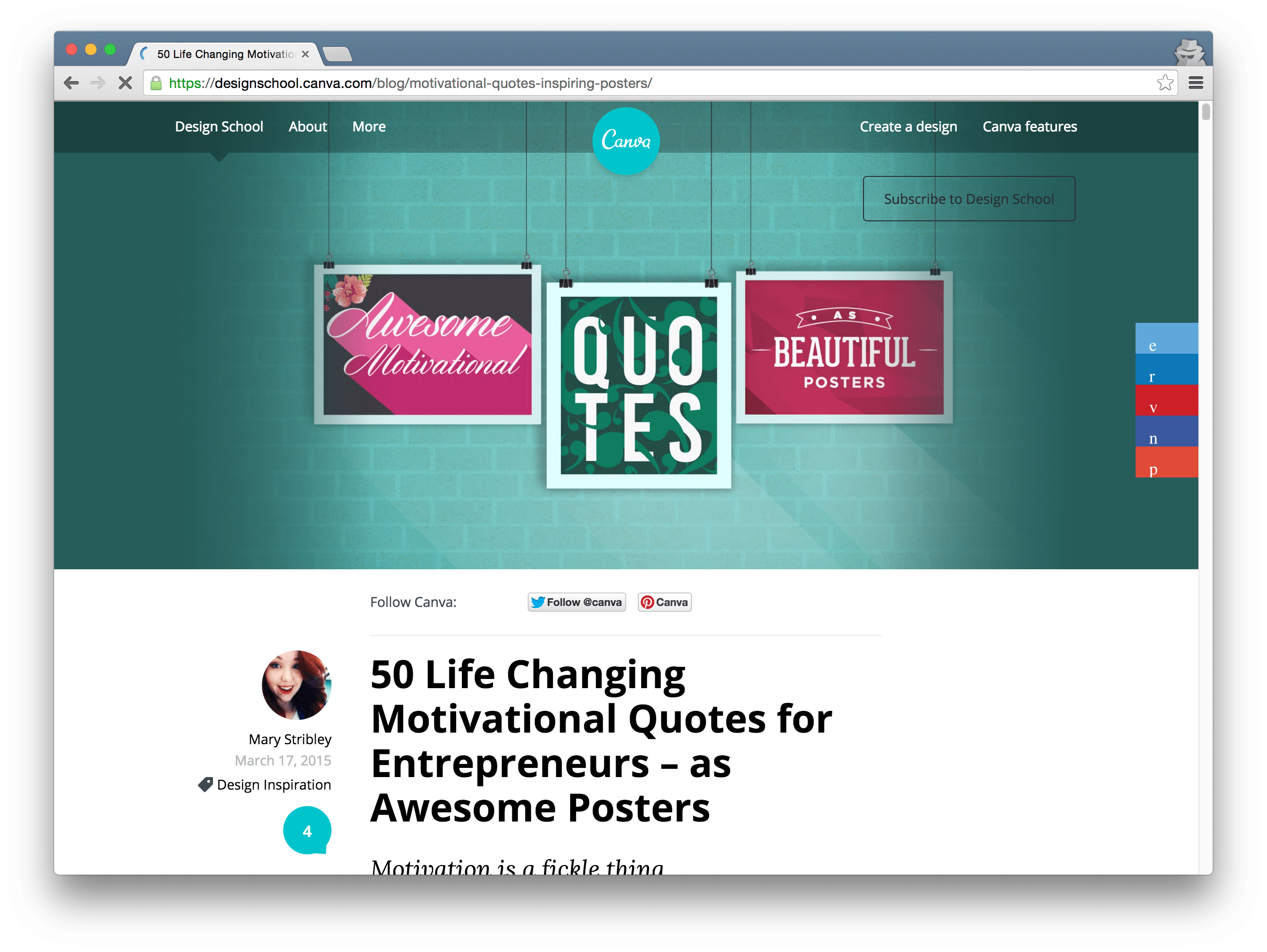
We’ve Lost Nearly Half Our Social Referral Traffic in the Last 12 Months
Former VP of Marketing @ Buffer
This is a little tough to admit.
I’ve been failing at social media marketing.
It feels weird admitting this, too: We as a Buffer marketing team—working on a product that helps people succeed on social media—have yet to figure out how to get things working on Facebook (especially), Twitter, Pinterest, and more.
And that’s super scary to admit.
What’s happening? I wish I knew! We’ve got lots of theories as to what’s behind our decline, and we’re in the midst of new experiments to see if we can move the needle on social media. Moreso I have some thoughts on what’s at play here for Buffer on social media—and maybe for you, too.
We’ve lost nearly half our social referral traffic in the last year
Yep, you read that right!
Almost half as many people find our blog from social media as last year at this same time.

Twitter is down 43 percent.
Facebook is down 53 percent.
LinkedIn is down 45 percent.
Google+ is down 72 percent.
Here’s the overall traffic graph for social referral traffic, with the orange line representing last October and the blue line representing this October. For 29 of the 30 days in the period, last year outperformed this year — and often waaaay outperformed!

All told, we’ve lost nearly 100,000 people who no longer get to the Buffer blog from social media.
What happened?
My best guesses at what’s going on here
I don’t have the answer for what’s gone wrong. I wish I did!
I’ve run through so many different scenarios about what could be at play here.
Maybe we need to hire a full-time social media manager to really devote some time and energy to doing great work on social media. (I often fail to prioritize social media sharing and treat it as an afterthought, which is no good at all.)
Maybe I’m no good at social media marketing. (Impostor syndrome to the max!)
Maybe our sharing ratio is off: Too much content, not enough conversation.
Maybe everyone else is failing, too! (I sure hope not.)
Maybe we need to post more often.
Maybe we need to post less often.
Maybe, maybe, maybe …
It’s quite the spiral!
A pretty significant change we’ve made to our social media sharing is a move away from the productivity and lifehacking content that did so well on social media in the past (articles like The Origin of the 8-Hour Workday and Ways to Be Happier). We now share mostly social media tips and strategies, which are great and helpful but maybe not quite as virally shareable.
The one area that seems to stick out most in my mind is that maybe social media itself is changing and I’ve simply not yet figured out how. Could be, right? Technology changes so fast and social media changes even faster, with new networks popping up constantly and new strategies being discovered daily. I’ve noticed that the best practices we share and research studies we report on for many of our Buffer blog posts can be old news almost by the time we dig them up.
And if it’s true that social media is changing, my hunch is that the center of these changes lies one thing we tend to create a lot of here at Buffer: content.
The content crush and what social media is doing about it
There is just so much content out there now.
Consider the hundreds of thousands of quality blog posts that are published daily (on WordPress sites alone last year, the daily average was 1.5 million new posts). Then add in all the multimedia content: photos, videos, GIFs, and graphics to support the original posts.
And then add all the user-generated content as well. Status updates and personal pictures shared to social networks sit right alongside Buffer blog posts and BuzzFeed articles in your timeline.
It leads to scenarios like this:
Every time someone visits the Facebook News Feed there are on average 1,500 potential stories from friends, people they follow and Pages for them to see.
And this stat is over two years old. Imagine how things have grown since!
Mark Schaefer of the {grow} blog has called this content shock, the idea that we’ve passed the point where content consumption has peaked and content creation has continued taking off.

And it seems we’re feeling this so acutely on social media now.
This crush of content eventually leads all social networks to a huge decision:
Should the feed be filtered with an algorithm?
Facebook arrived at this point years ago and has been fine-tuning its algorithm ever since. This Time article has a great way of explaining the algorithm:
automated software that tracks each user’s actions to serve them the posts they’re most likely to engage with
In essence, Facebook is guessing—highly sophisticated, very educated guessing—about what you’ll like.
And they’re guessing because they have to. They’ve found it to be a really tough user experience when people log on to see what’s happening with their friends and end up sifting through dozens of page posts to see the ones they most care about. Likewise with those who just want to see what their favorite brands and personalities are up to.
Facebook reached the point where it simply couldn’t show you everything.
Other social networks are getting there, too (if they haven’t already).
What this means for the future of social media marketing
Whether it’s a highly-filtered feed with an algorithm at its core or an overflowing feed full of anything and everything, it’s getting harder and harder for traditional social media marketing to keep a foothold with its audience.
And rather than blame the algorithms for my poor performance on social, I think a better way of thinking about it is this:
I’m failing on social media because I’m failing to adapt as fast as the social network themselves are adapting.
I see a couple roads forward:
- Pay for more reach on social media.
- Get better at connecting with your audience.
The first one sounds easy—costly, but easy.
The second one feels enormously difficult—free, but hard.
1. Pay for reach
You can improve your reach right this minute with just a few dollars. For $5, we reached 787 more people on Facebook—less than a penny a person!
Reach seems easy.
And that’s often the road that many marketers will take by default. If organic reach is down, then paid reach can help fill it back up again.
By the same token, there’s so much more at play here. Paid ad professionals are worth every dollar they earn because doing paid ads well—advertising to people who aren’t expecting you, and getting a positive reply—is so tough.
Watching our steady decline of social traffic to the Buffer blog, I’d prefer to get more engagement along with more reach on a Facebook or Twitter ad. I’d love for people to not only see our post but also to click on it and to engage with us.
So my option becomes learning how to do social media ads really well—messaging, tactics, technical, everything.
2. Get better at connecting with your audience
These are a couple of my dreams:
What if we had a Twitter feed so compelling that people wouldn’t just hope our tweets showed up in their timeline but they would go directly to twitter.com/buffer all day every day to see absolutely everything we tweeted?
What if we had a Facebook page that felt so uniquely valuable, personal, and intimate that our posts arrived in the News Feed as frequently as birthdays and baby announcements?
I truly believe it can happen.
(And I truly don’t know if I’m the right person to make it so!)
There are examples of pages and brands who are succeeding on social media without needing a paid boost. How? Why? Where? I feel like I’m watching a magic show, and I’m so inspired and stupefied at how it all happens.
But it does happen.
Brain Pickings has over 3 million likes to its page.

Gary Vaynerchuk gets over 7,000 views per video.

I believe there is a way to get organic reach on social media, and as soon as I figure out how I will race to share it with you.
We’ve seen it in fits and starts with some of the strategies we try. We’re going to keep trying more and more (paid ads included). Here’s a plan.
What we’re going to try
Everything is on the table for us at this stage to try. We’re hiring a full-time social media manager, which we feel will make a huge difference. In addition, these are a few actionable tips we’re looking to implement:
1. Make it easy for people to share our content
This involves showing share buttons to both desktop and mobile visitors (HT: Sumome plugin for the mobile buttons). We’re also looking at adding “Click to Tweet” quotes in new articles.
2. Design beautiful, shareable visuals
Have you seen the social media share numbers on the Canva blog? They’re knocking it out of the park! This one, for example, has been pinned 26,000 times!

Seems like we could make a lot of headway on getting our articles share-ready for social media by asking for some design help from the Buffer design team. I may have maxed out my design skills!
3. Share just to share
This is kind of a weird one. Whenever I look through the stats of some of our top users at Buffer, I notice that so many of their great social media updates are simply photos and text. No links. No cta or purpose other than to connect with their audience.
In the short term, this won’t do much to change the social media referral traffic (we won’t be getting any traffic from non-link updates). But maybe it’ll be enough to support the community and build a more engaged audience over time?
What are you trying?
Does this decline in social media engagement resonate with you at all?
What are you currently up to on social media? What’s working? What’s not?
It’d be amazing to have the chance to learn from you here. Feel free to leave any thoughts at all in the comments below, and I’d love to jump in and join the conversation!
Image sources: Pablo, IconFinder, Unsplash, {grow}
Try Buffer for free
140,000+ small businesses like yours use Buffer to build their brand on social media every month
Get started nowRelated Articles

TikTok's parent company must divest the app or face a ban in the U.S. Here's everything we know, plus how to plan ahead.

Whether you’re a full-time content creator, micro-influencer, nano-influencer, or just getting started, here’s how to create your own influencer media kit.

In this article, get answers to questions about social media for solopreneurs.